"There's a whole new line from Conway Stewart to write about, and guess who's lucky day it is?" This really is how our editor talks when she calls up. But as it just so happens, the idea of getting an advance look at a new line of pens sounded pretty good to me. New pens always sound good to me, that's why I have a visa bill the size of Mount Rainier.
It was arranged for me to have a weekend with the first set of samples to arrive in the country, and the first surprise came with the size of the box delivered by UPS on Thursday afternoon. I was expecting the standard 48 pen display case. Instead, I received a huge box, inside of which were no less than three very nice heavy leather pen cases. One for each of the three lines.
Conway Stewart is concentrating their new line into three models, the Churchill, the Duro, and the 100. The Churchill and the Duro are familiar from the previous incarnation of Conway Stewart, the 100 is something new. In all three models the colors are definitely new, with very bright materials taking over form the rather staid choices previously offered.
The three models sent manage to separate rather tidily into what you might call small, medium, and large. However, it's important to note that the 100, while a bit smaller than the Duro and Churchill, is by no means a "small" pen. It's actually what most would call a "mid-sized" pen. It's larger than the 58 size, a bit thicker, and longer. It only comes across as small when you pair it up with the Churchill!
We'll begin with a look at the 100, and work our way up in size to the Churchill. The 100 is a new model for Conway Stewart, but if you're familiar with their 58 pens, the 100 will seem very familiar. The profile is very similar to the 58, just a bit larger. It's based very closely on the model 100 from the 1950s. Conway Stewart had three versions of the original 100 model from which to pull styling cues, they chose the best of those to use in the current incarnation of the 100.
With the 100 we get a nice, simple design. Three cap bands, a larger center one with flanking rings, are set into the cap, and the clip is the same design used on the 58, very true to the original vintage Conway Stewart pens. The clip is mounted to the top of the cap with a black tassie. A thin ring at the lower end of the barrel completes the metal trim visible with the cap on. The remainder of your attention is held by the material of the pen.
The colors available for the new Conway Stewarts range from quite simple and understated to a couple that leap right out of the case and grab your eyes. If you've always felt that modern pens were too conservative in their marbled acrylic, I would direct your attention to the "Yellow Whirl". This is a bright orange color, with even brighter yellow lines looping throughout the cap and barrel. Not for the faint of heart, this is a pen that makes a statement! Likewise, the "Nebula" or "Meteor", respectively a marbled dark red, white and blue, and a reddish orange marble.
Now, if you're in the market for something a bit more traditional, Conway Stewart comes through with some very elegant and understated colors as well. "Classic Claret", a burgundy marble, "Quartz Blue" a medium blue marble, and "Sepia Blue", a nice marbled mix of blue, gray, and amber. Perhaps the most impressive of the new colors is the "Lapis", which is a dark blue with gold flecks.
So, it's very much a case of "something for everyone"! Once you make it through the process of selecting your color, it's nice to note that the 100 is a very well made pen. The first and foremost detail that I noticed was that the section is of the same material as the cap and barrel. This is a simple point, but it can really make the pen from a design standpoint. Far too many manufacturers have been content with having the section out of plain black, no matter what the cap and barrel material. While this may make for simpler manufacturing, I find it to be a bit jarring in terms of design.
So right out of the gate, the new Conway Stewart 100 scores points with me. The second place in which it comes out ahead is in terms of fit and finish. It's very well made, with the metal to acrylic fit at close tolerance. The cap bands fit flush with the material, and the clip sits tight against the cap. When you pick one up, it feels good. Like an "expensive" pen. Something that some maker's expensive pens have not yet managed to accomplish, by the way!
The 100 is a piston filler, with the piston knob accessible from under a blind cap at barrel end. The piston mechanism operates smoothly, and ink capacity (measured with water, since I wasn't sure about loading up these samples with ink!) seems about equal to a standard sized converter. In fact, I was surprised to find that these pens were not cartridge converter filled. It's nice to see a company that is committed to offering self-filling pens instead of the simpler cartridge converter models.
The nib on the 100 is the same as that used on the other two models I reviewed, and looks to be a good serviceable nib. I have not yet gotten my hands on any of the italic versions, which I hear are quite nice, but even the "standard" medium nibs on these samples proved very smooth. The tipping material is rounded enough to keep the feel of the nib on paper pleasant.
Another nice touch was that the nib looks to be properly fitted to the feed. You might think that this should be an obvious step in manufacture, but it's amazing how often a nib will require a bit of final adjusting right out of the box. The nib can be slightly angled to one side or another on the feed, or in extreme cases, even set with a gap between the nib and feed. Obviously, this is not conducive to proper operation!
I checked every nib on the samples, twenty-nine pens in all, and every one looks to have been set up properly. Together with the attention to fit and finish, and the close tolerances on the machining of the cap and barrel threads (another pet peeve of mine!) I'm left with a very good feeling about the new Conway Stewart Company.
The next pen up in terms of size is the Duro. Owing lineage to several models from the 1920s and 1930s, the Duro is also a "mid-sized" pen, but this time in a more straight sided "flat top" design. On the Duro, both the cap top and the barrel end are rendered in plain black, serving as an accent to the colored material of the cap and barrel. As with both the 100 and the Churchill, if rendered in a plain black, the Duro would seem a very simple design. Add in the color choices available from Conway Stewart though, and you've got a pen that stays lively.
The Duro that jumped out in my opinion was the "Flecked Amethyst". It's just not common to find a purple pen these days. It's a popular colour when it does hit the market, though, and I'm predicting that this will be one of the more successful materials for Conway Stewart. It consists of a mix of dark and lighter purple background with white flecks. Very impressive, especially in a design like the Duro, with the black cap top and barrel end to set off the material.
Like the 100, the fit and finish is first rate, and the Duro had a very similar feel in the hand as the section is about the same diameter as the 100. The Duro is much longer, especially with the cap posted. Posting the cap does affect the balance, but not as much as you might think, the material is quite light, so you're not adding a lot of weight out there on the end of the barrel. The Duro is still very much a "mid-sized" pen, and should prove to be quite popular from a size standpoint.
If you find "mid-sized" to be just another word for "small", then the Churchill is for you. The Conway Stewart Churchill made quite an impression when it was first introduced a few years ago. It's a very large pen, and takes styling cues from the Conway Stewart pens of the 1920s. A flat top design, with an interesting barrel shape that tapers just slightly towards the section.
Just as with the other two models, I found the Churchill to be very well made. It seems that the new owners of Conway Stewart are taking the idea of quality control very seriously. The threads on the cap and barrel on all the samples I received were cut to close tolerances. Once again, the fit of metal to acrylic was precise. This included the fit of the lever into the barrel slot, which can be a weak point for lever filler pens that do not use a metal lever box to hold the lever in place. On the new Churchill, the lever fits flush into the barrel. The overall impression of the Churchill was of very high quality.
High quality, and quite a lot of it! The Churchill is a massive pen, even by my standards. Thanks to the choice of acrylic for the cap and barrel, the weight is kept realistic, but with the cap posted, the Churchill is a real handful. While the section is smaller around than you might think from first glance, thanks to the barrel gentle taper towards the front, it's still clearly a large pen.
So, with just these three pens, the new line-up from Conway Stewart is impressive enough. A little something for everyone, with all three models being available in all the colors, you can have a pen that fits your size preference, and is also as bright or as conservative as you want it to be. Add in the fact that Conway Stewart is still producing the smaller 58 series, as well as the diminutive Dinkie, and you've got an even wider spread.
If the high end is your thing, rest assured that you can get a Conway Stewart LE pen, there are several in the current line-up, everything from sterling silver or solid gold versions of the 58, to a maki-e version of the Churchill. With further limited editions to come, including an overlay version to mark the centennial anniversary of Conway Stewart next year.
I'm impressed with the new Conway Stewarts. The company seems to be heading in the right direction, both in terms of their policies regarding production and quality control, as well as with the new materials and models. It will be interesting to see what the second century of Conway Stewart brings to us!
ARCHIVE
Conway Stewart New Line, 2006

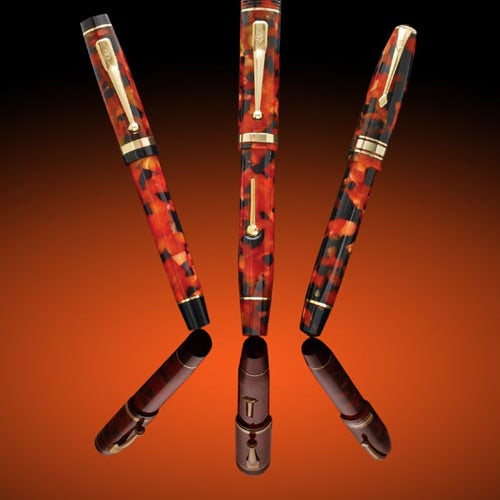
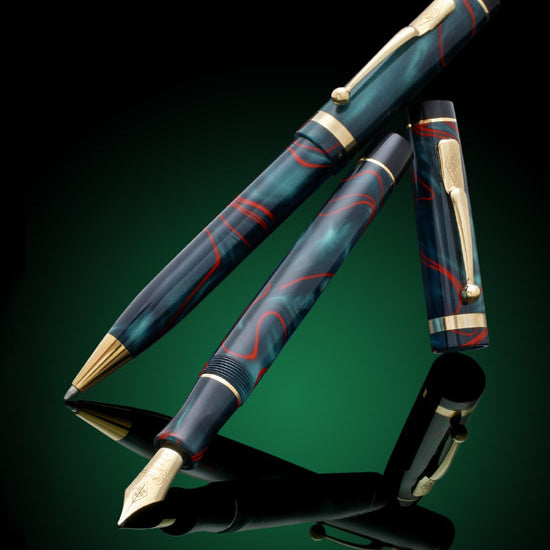

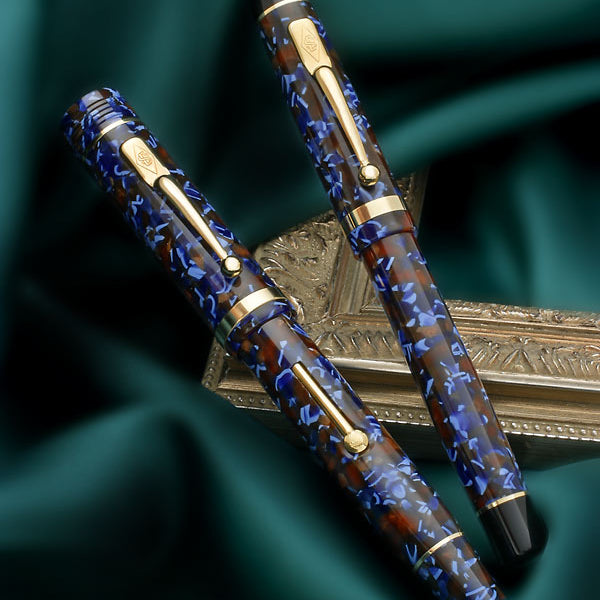
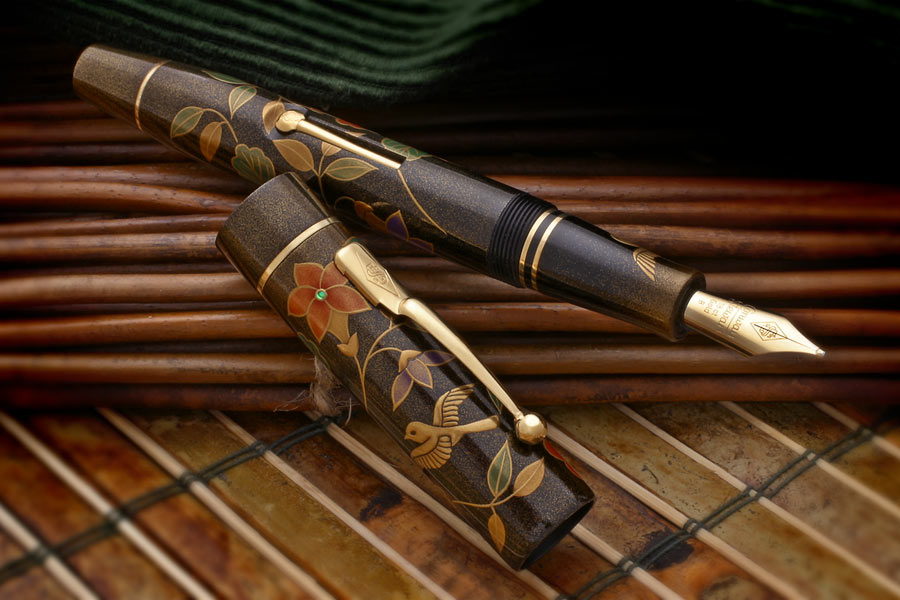
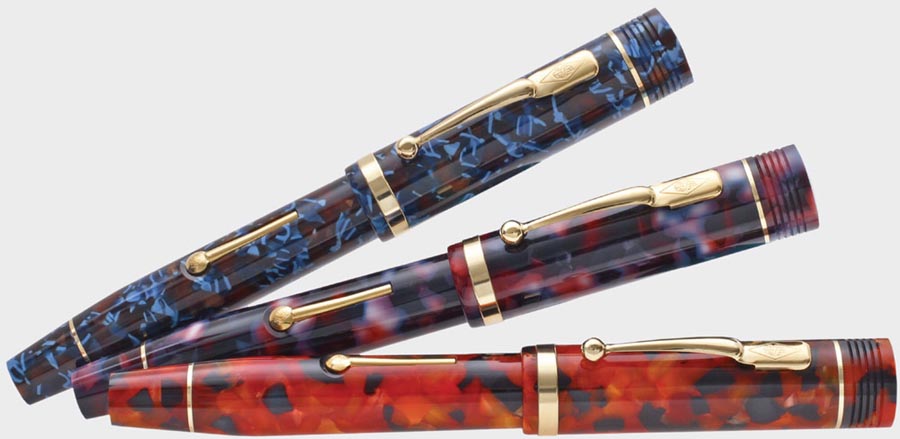
Archive Blog Posts
WES Journal edition #126, Winter 2023
Spotlight on Conway Stewart Originally published in WES Journal 126, pp 26-29, 2023
The History of Conway Stewart
The Beginning In 1905, Mr. Frank Jarvis and Mr. Tommy Garner formed Conway Stewart & Co. Limited at 13 Paternoster Row LondonEC1, next to St Paul’s Cathedral in London. Today,...
Conway Stewart 'Babbage'
Charles Babbage is popularly known as the “Father of Computing” for his pioneering work with computing machines. The use of Jacquard punch cards, chains and subassemblies, and the logical structure...
Conway Stewart Evergreen Sterling Silver Duro Special Edition
SOLD OUT! Retail List Price Fountain Pen or Roller Ball — £599 $970 €630 Welcome to our February 2010 Special Edition — the Conway Stewart Evergreen. Based on our popular Sterling Silver Duro model,...
The Balmoral
Following the success of our Windsor, which was inspired by the ornate decoration gracing the creations of English gunsmiths, Conway Stewart is pleased to announce the second in this prestigious...
Conway Stewart Cavendish Edition
Conway Stewart is proud to announce our new model in English hallmarked solid sterling silver, the Cavendish. A bold stylish design that brings together a traditional shape with a crisp...
Conway Stewart 'Elizabeth Garrett Anderson' Limited Edition
Elizabeth Garrett Anderson is regarded as England’s first female doctor; a pioneer in educating women in medicine; a strong supporter of women’s suffrage and opportunities in higher education, as well...
The Wellington Series
Arthur Wesley was born in Dublin in 1769. In 1798, his aristocratic Anglo-Irish family changed their name to Wellesley. In honour of Sir Arthur Wellesley, Conway Stewart commemorates the Duke...
Professional Series - Doctor's & Lawyer's Edition
The new Conway Stewart Professional Series is designed to reflect the dedication and life’s work of individual professional fields. These striking new designs are crafted of gleaming black resin and...
Kipling 'IF' Special Edition
The new Special Edition from Conway Stewart is inspired by one of the most important literary figures in English history. At first glance this pen looks like it has a...
Conway Stewart Belliver Series
The new Belliver model from Conway Stewart is a return to the finest traditions of CS heritage, rooted in attention to detail, a perfect size and weight, as well as...
Conway Stewart Montague and Capulet Series II
The 2013 Montague and Capulet series from Conway Stewart celebrates the principal characters of Shakespeare’s eternal classic Romeo and Juliet, bringing a graceful and elegant slim design to life in...
Excalibur Limited Edition
Conway Stewart is pleased to announce the latest new colour on the popular Churchill model — Excalibur with hallmarked solid sterling silver trim. The Churchill Excalibur hand made resin consists of a...
Conway Stewart Edwardian Limited Edition
Conway Stewart is proud to present our new limited edition sterling silver series, ‘The Edwardian’. Based on our popular Belgravia model, the Edwardian is completely crafted from solid sterling silver...
Conway Stewart Gatsby Limited Edition
“Nominee in the 2014 Pen World Reader’s Choice Awards — Best Cultural or Historical Theme” During the classic era of the 1920s, a fine fountain pen was considered not just a luxury,...
60th Anniversary 100 Series Special Edition - Pistachio
60th Anniversary Celebration! The 100 Series was first launched in 1954 and was quick to become one of the most popular Oversize pens ever made by Conway Stewart. In celebration...
Marlborough Vintage Limited Edition Pens
The Conway Stewart Marlborough Vintage Limited Edition is a distinguished new design, that is inspired by the classic styling of our vintage models and created with our present day manufacturing...
Jaguar Limited Edition
The Conway Stewart Jaguar is a new finish to compliment our sold out Elegance Aztec limited edition. Each pen from the Elegance range has a unique design and is produced...
Conway Stewart Collectors Club - Celebration Pen & Book Special
Offered only to members of our Collectors Club, Conway Stewart is making available the Celebration pens accompanied by a hardback copy of the new book, Fountain Pens for the Million — The...
Conway Stewart Collectors Club - Churchill Carbon Fibre
Conway Stewart is making available exclusively to members of the Collectors Club our award-winning Churchill model with hand wrapped Carbon Fibre overlay covering the cap and barrel. Each pen is...






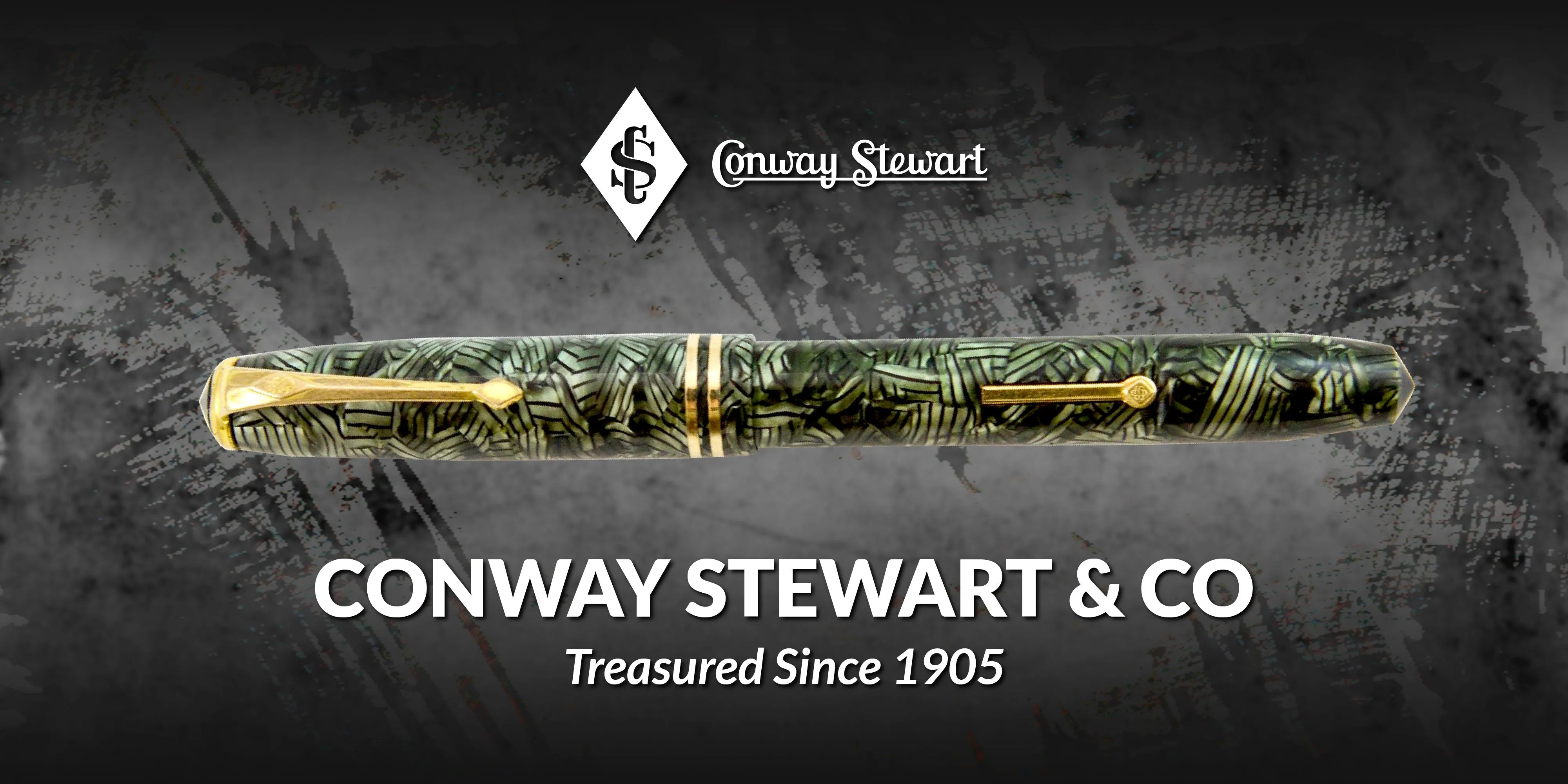
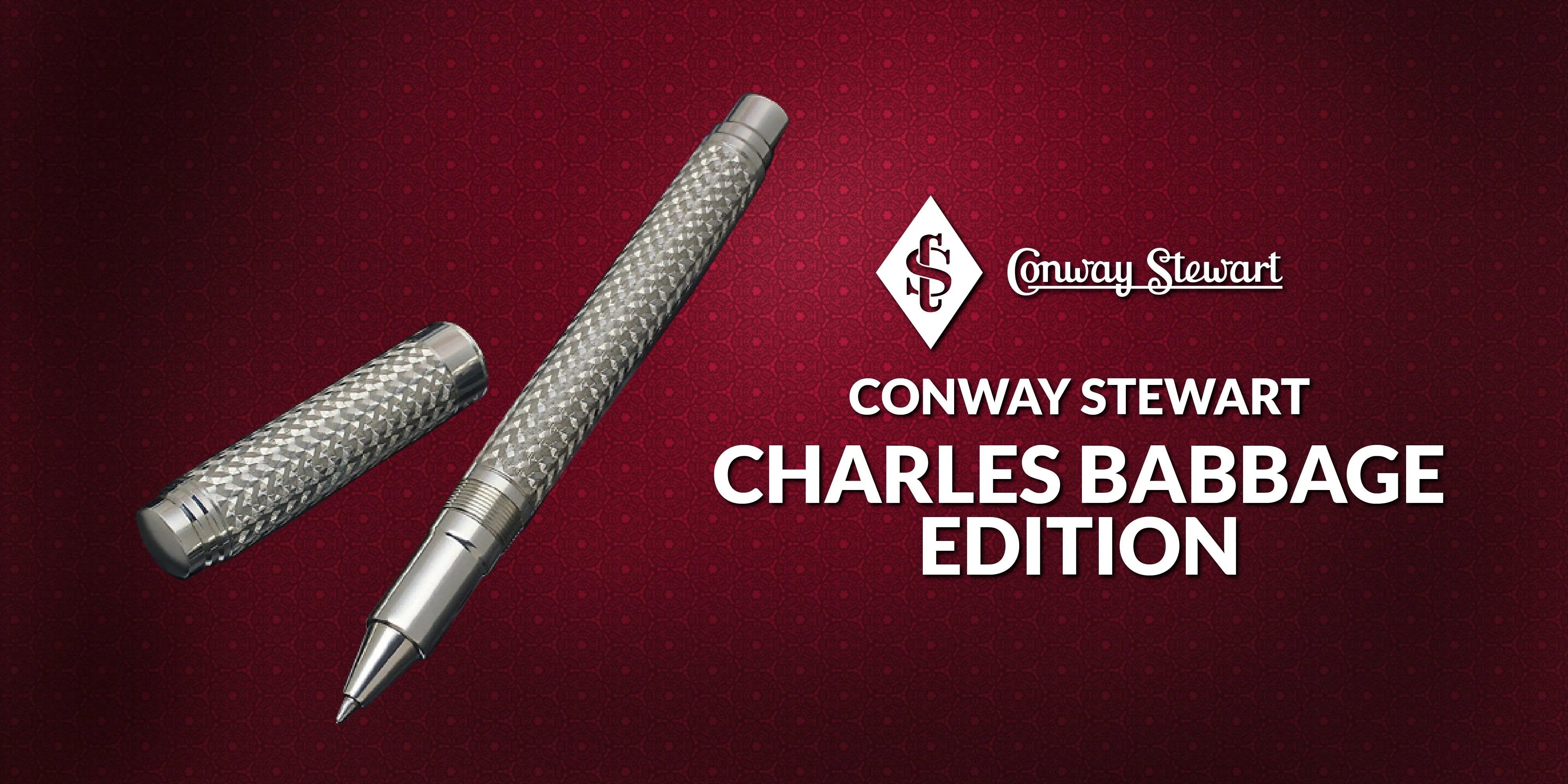



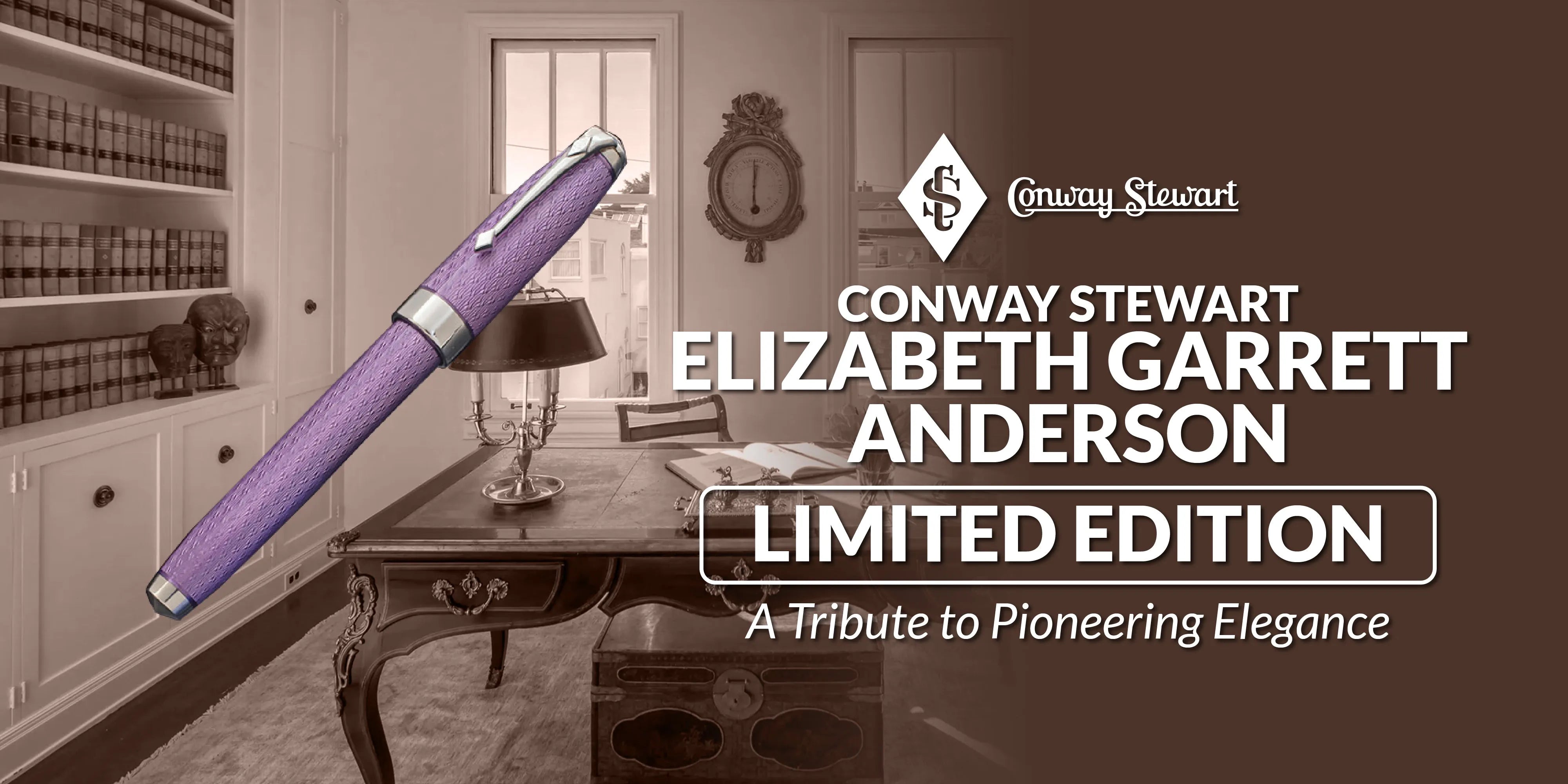


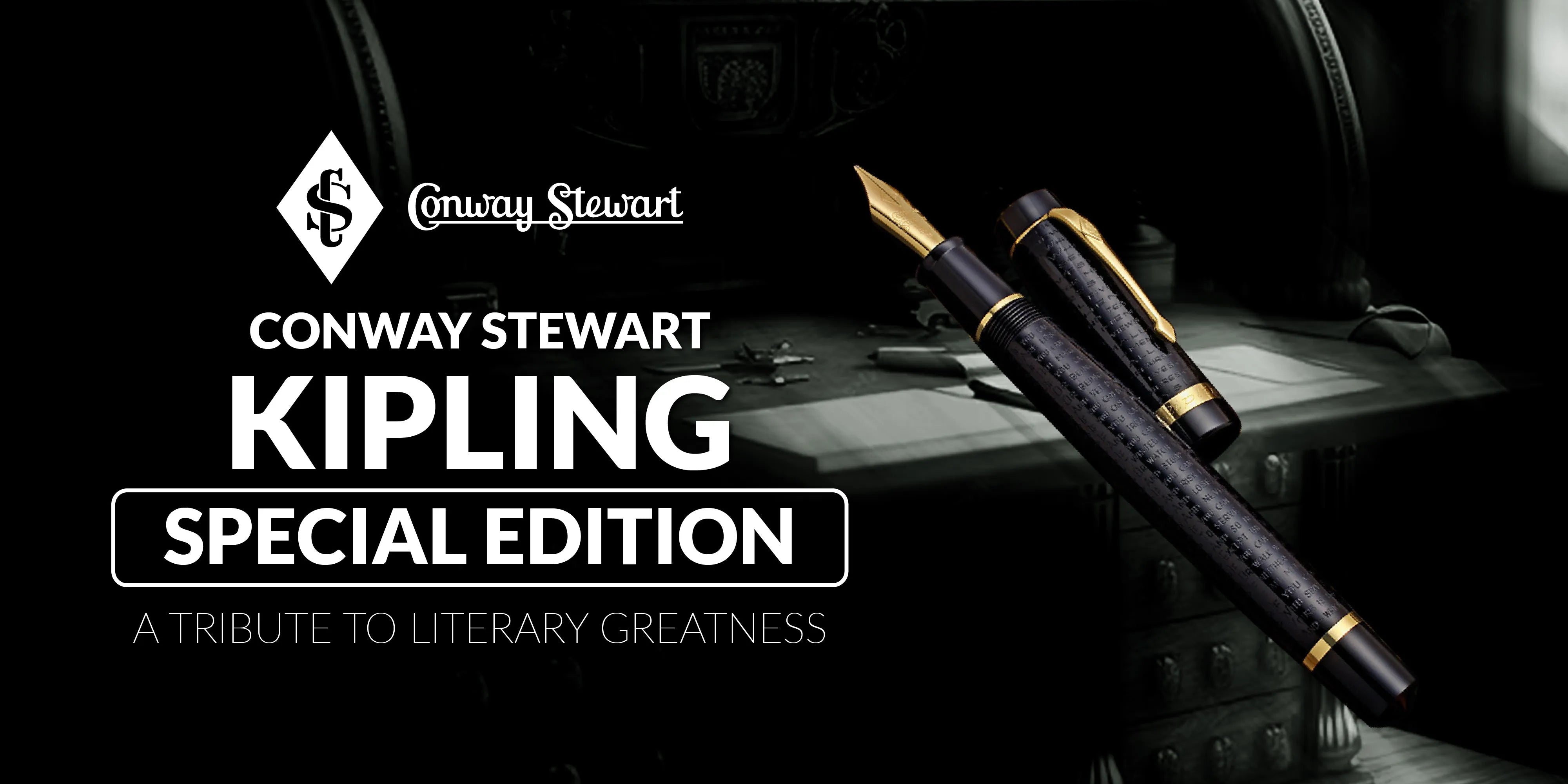
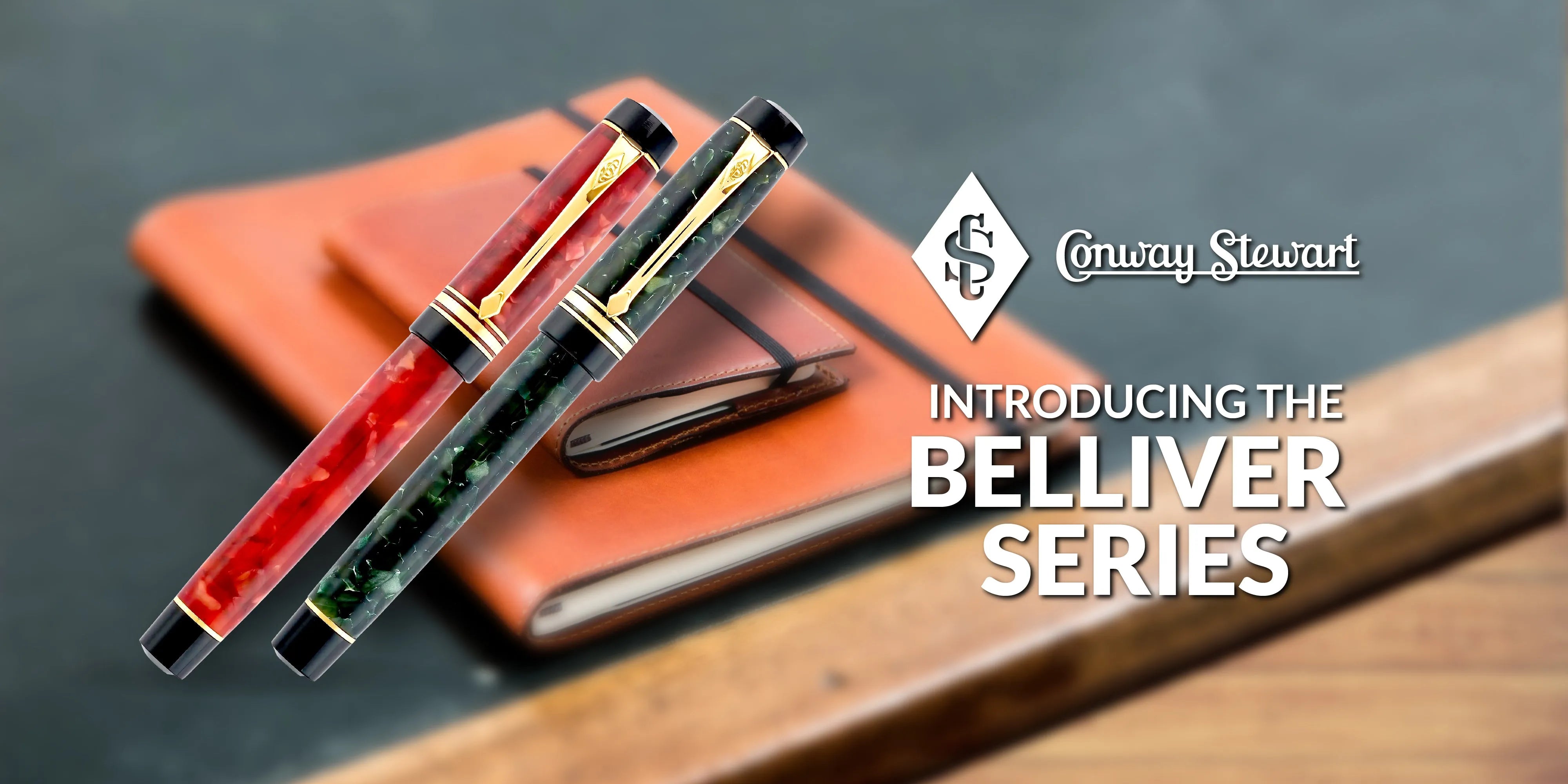

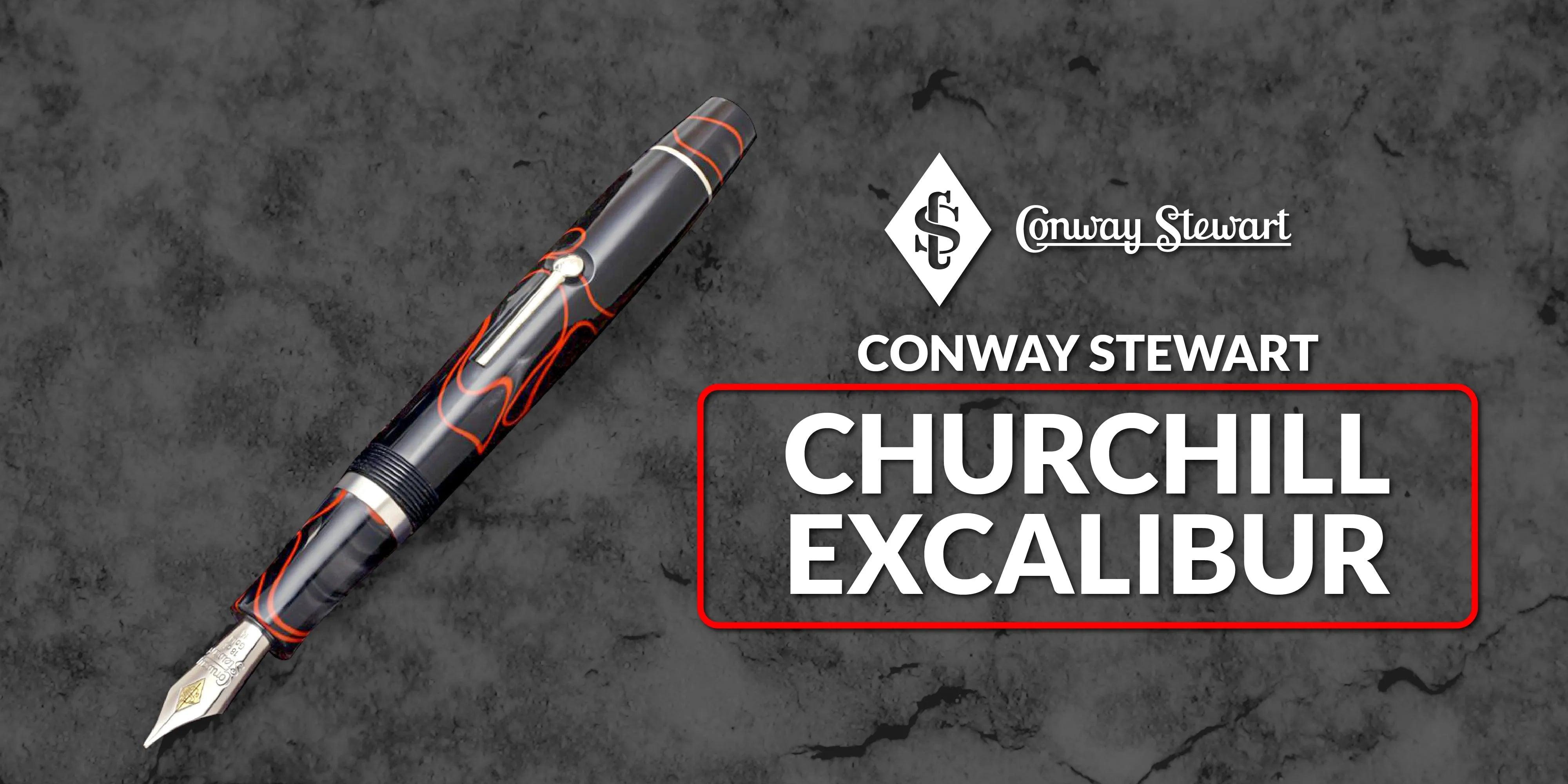

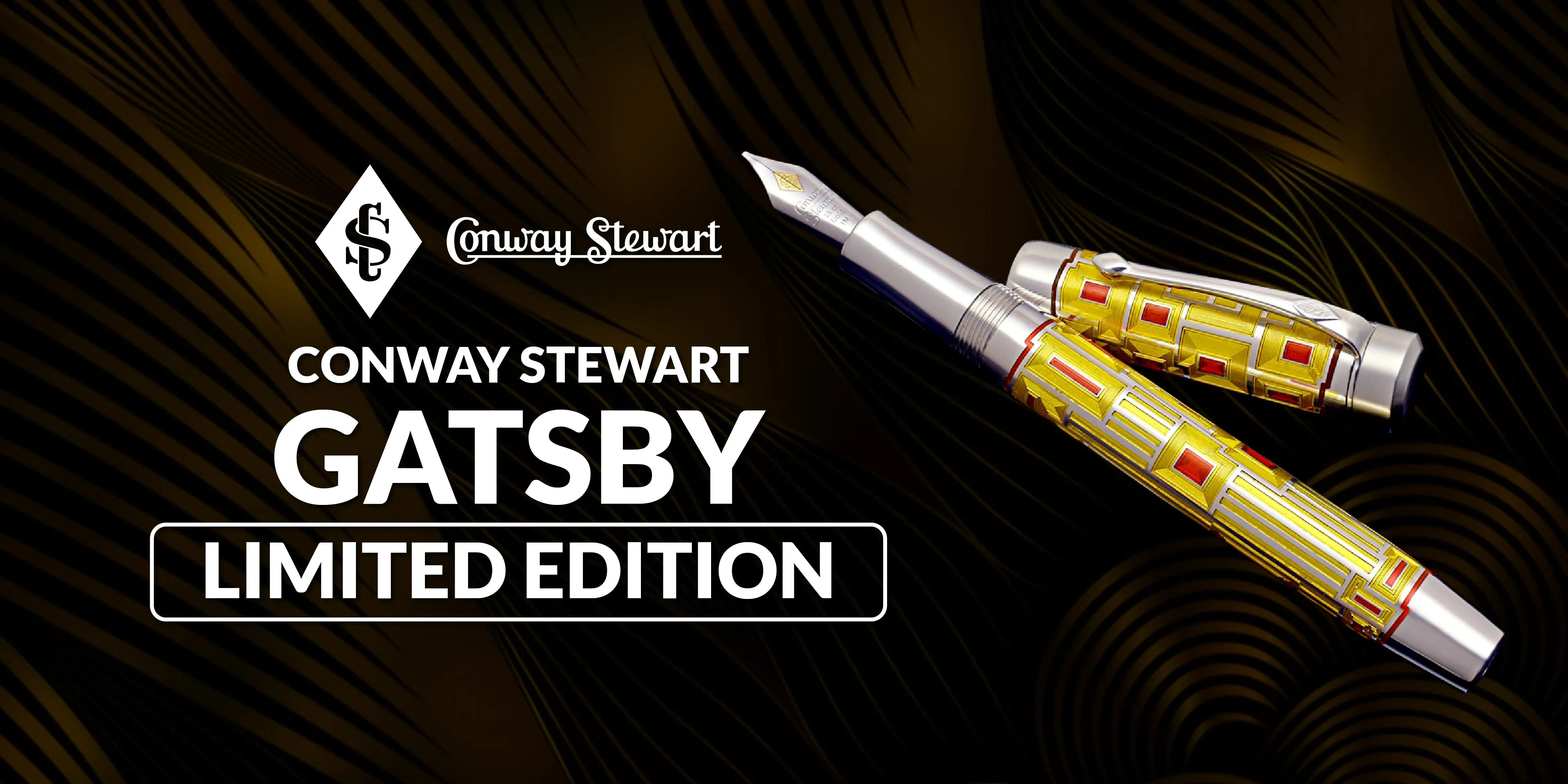
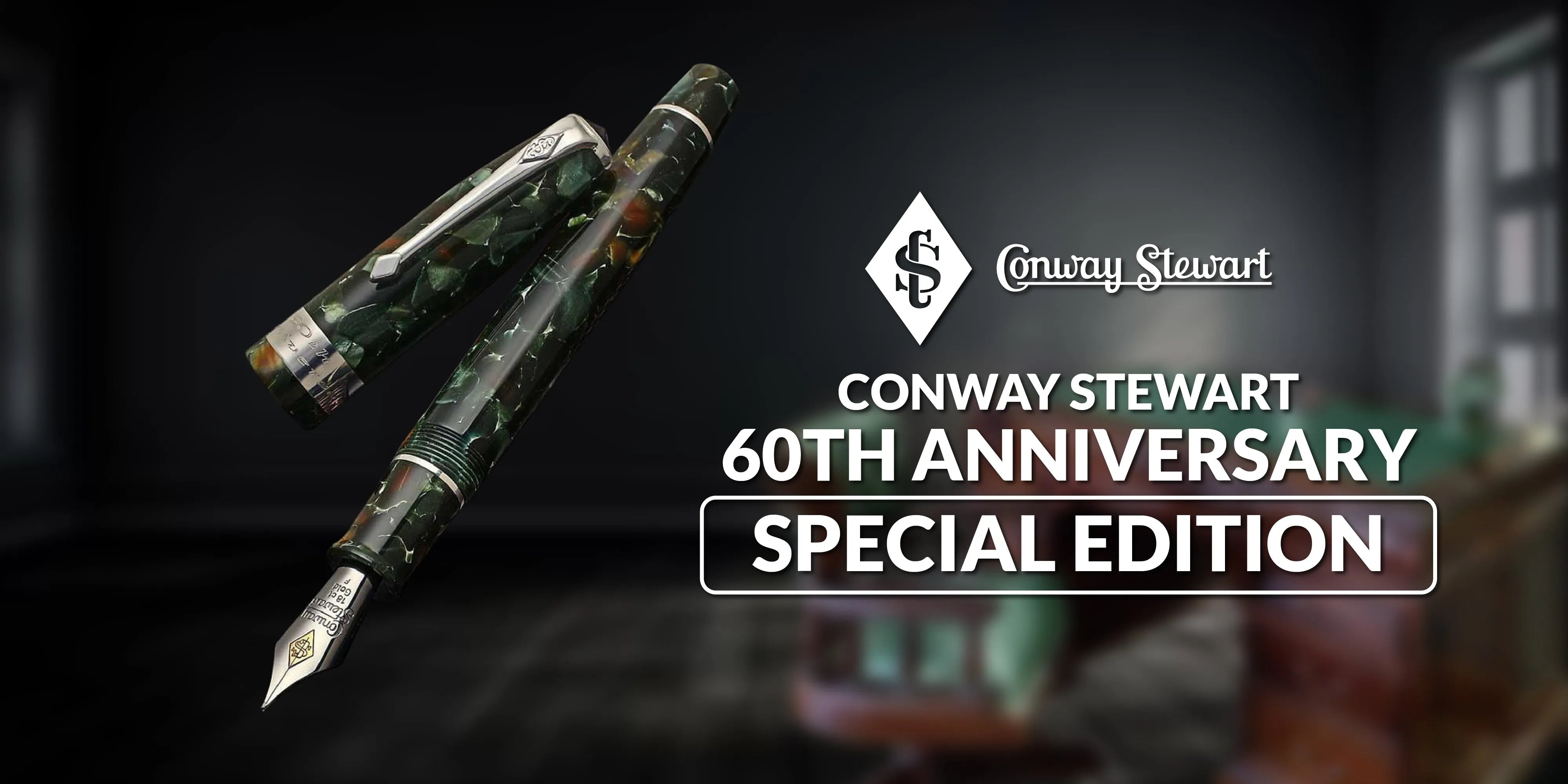

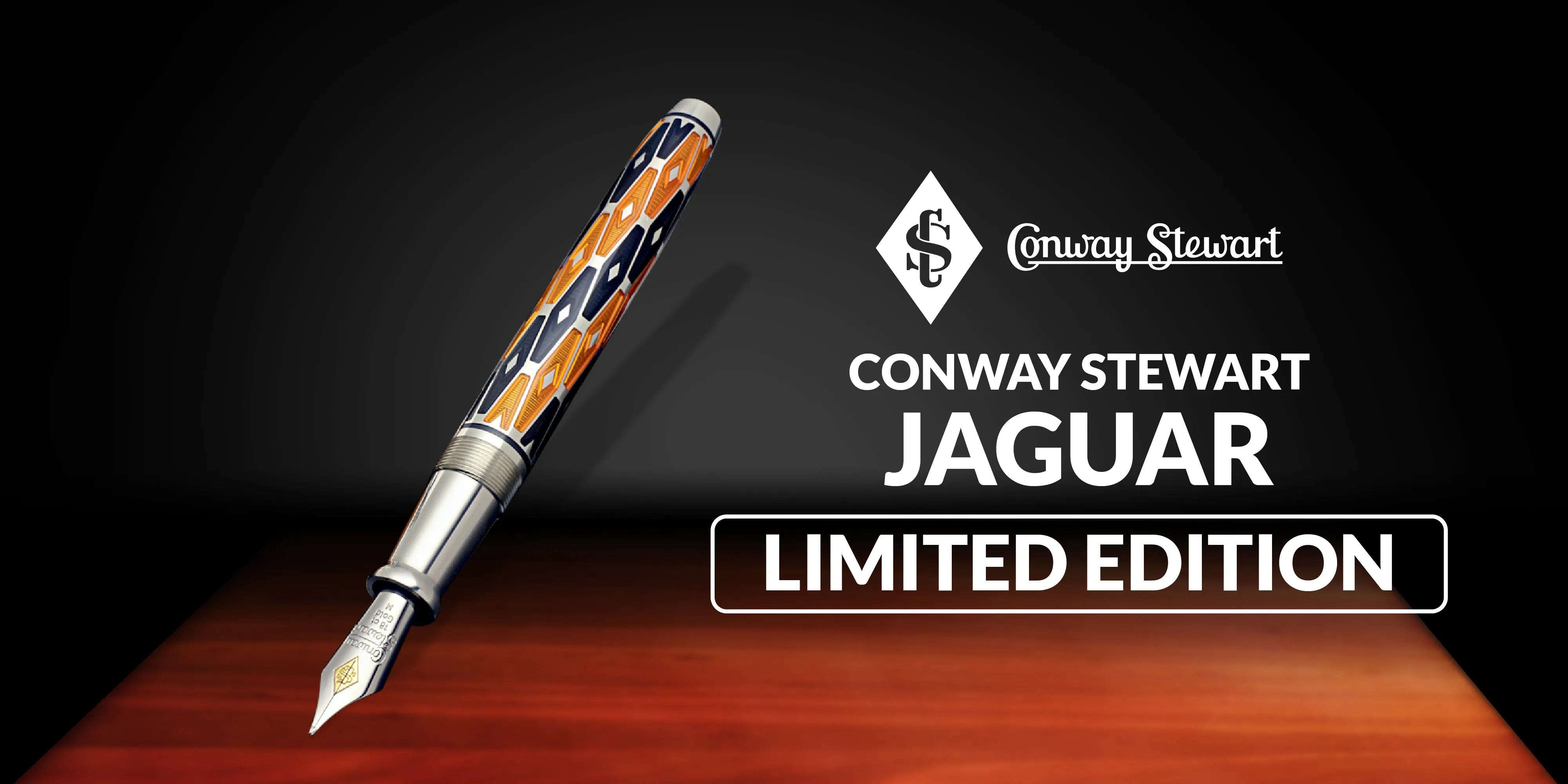
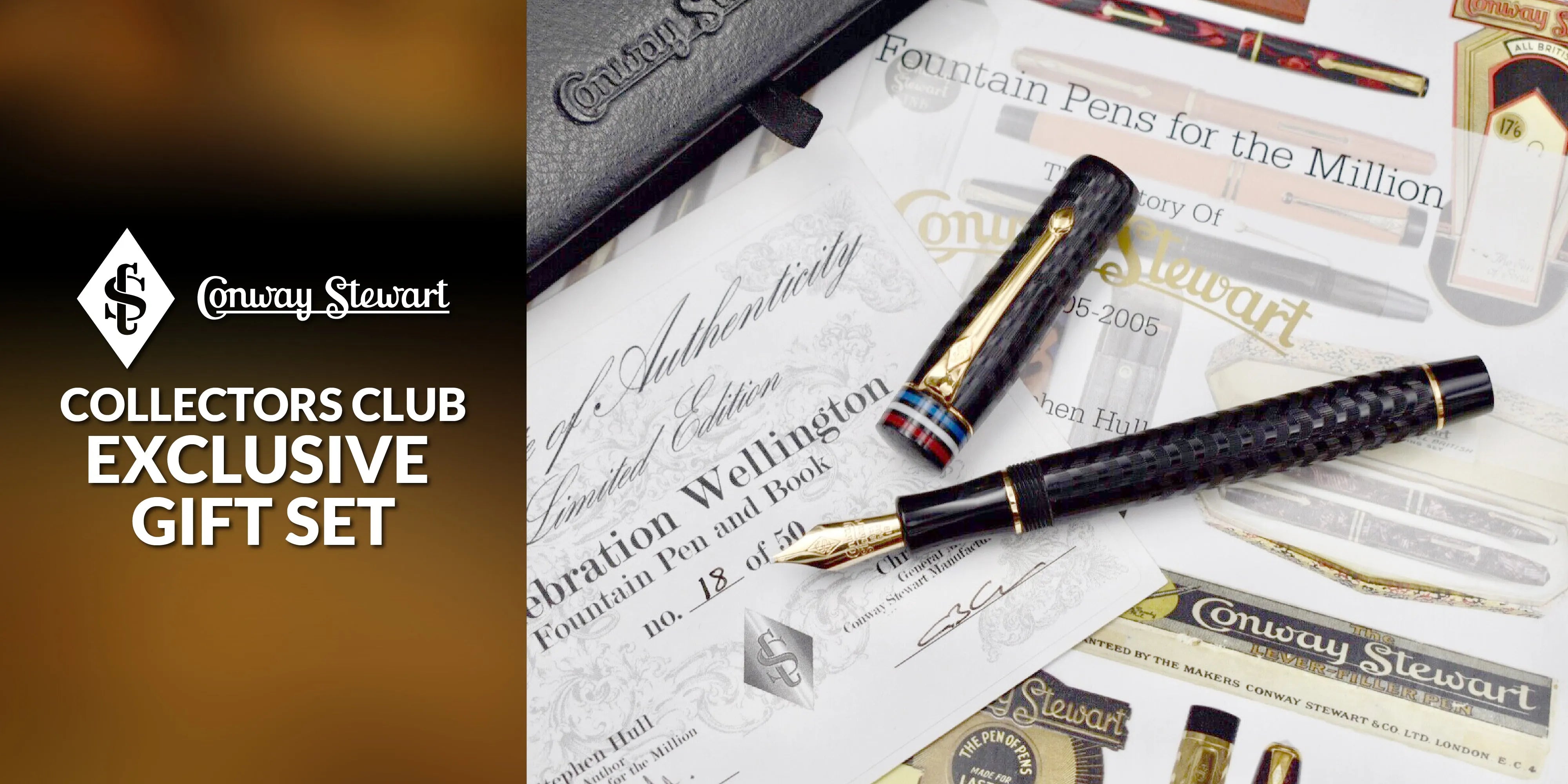

Leave a comment